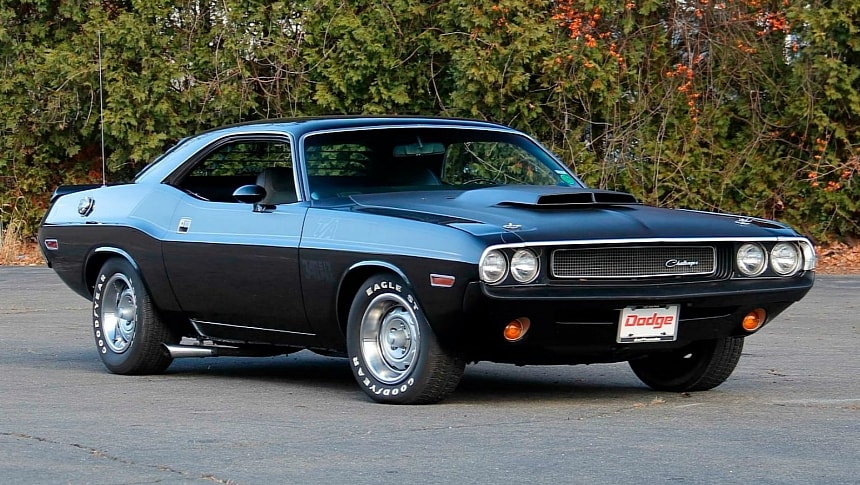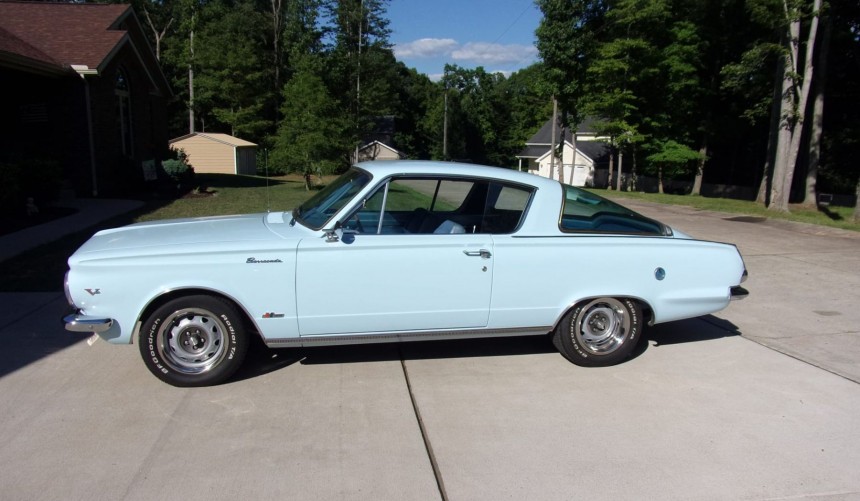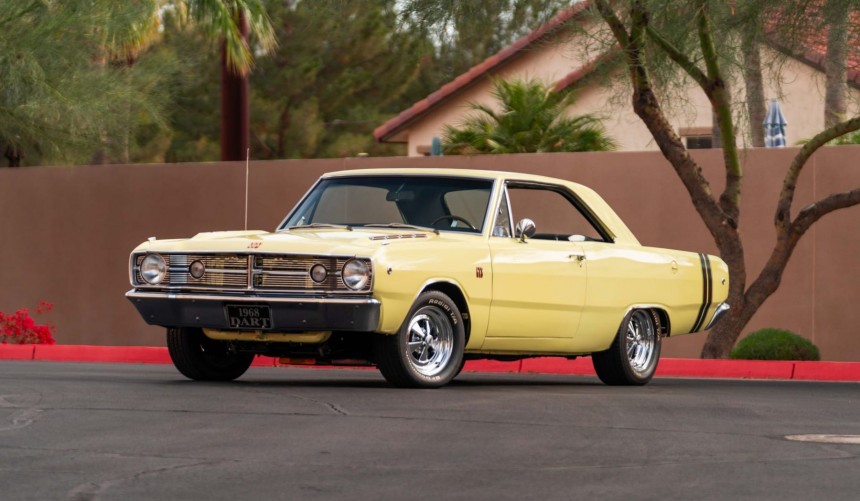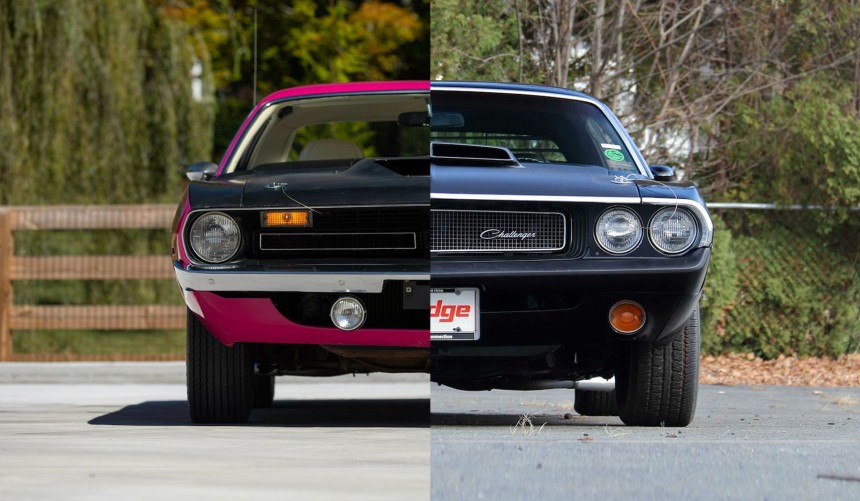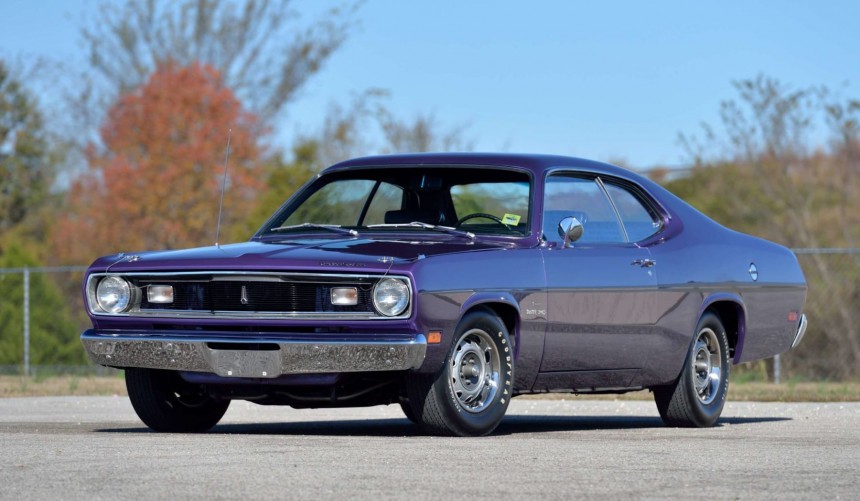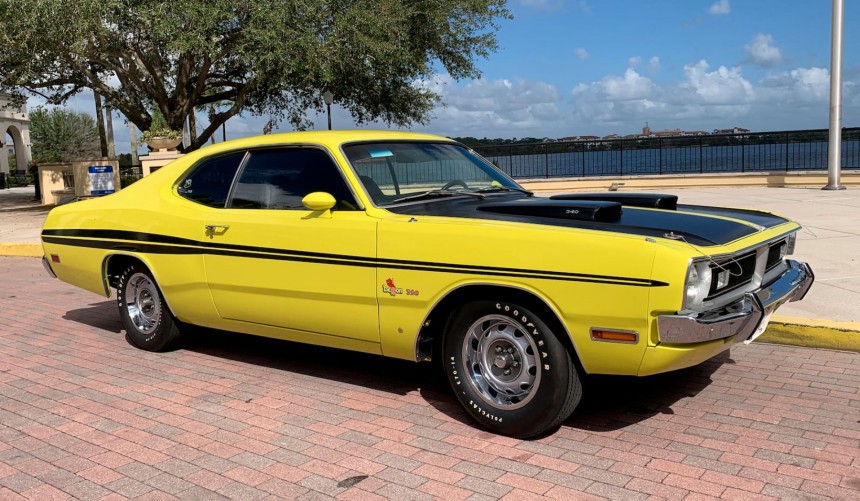Though not powered by mighty big blocks like the legendary 426 HEMI, these five Mopars became muscle car icons thanks to their potent small-block V8s.
During the golden age of muscle cars, Mopars ruled the streets, tracks, and drag strips with mighty big-block V8s under their hoods.
Examples include the powerful 440, available in several high-performance configurations throughout the years, and the all-conquering 426 HEMI, also known as the Elephant engine.
But while the era was dominated by obscenely powerful Mopar big blocks, some of the Chrysler Corporation's iconic muscle cars introduced during the mid-1960s and early 1970s packed a lethal small-block punch.
Released in 1964, a few years earlier than the Mustang, the Plymouth Barracuda became the Chrysler Corporation's first take on what would become the pony car segment.
For the 1965 model year, Ford upped the ante by introducing the GT Equipment Group and the Shelby-developed GT350, which pushed the Mustang lineup into muscle car territory.
Though the 'Stang became far more popular from the get-go, Plymouth didn't stand back and answered with its performance-oriented package.
Dubbed Formula S, the package added a beefed-up suspension, larger wheels and tires, bespoke badges, a tachometer, and, later in the model year, front disc brakes.
However, the most interesting upgrade that came with the Formula S package was an upgraded version of the 273-ci (4.5-liter) Comando V8.
Equipped with a four-barrel carb, 10.5:1 compression, and a hotter cam, the upgraded powerplant made 235 hp - a 55 hp increase over the 1964 Commando V8.
With its powerful small-block V8 and chassis improvements, the Formula S became the first Barracuda with legitimate muscle car credentials and laid the groundwork for the beefed-up 'Cudas that followed.
When it comes to late 1960s muscle cars (or supercars, as they were originally called), most Mopar enthusiasts have developed a life-long passion for the Charger and Road Runner intermediates.
Though overshadowed by its larger siblings, the high-powered Dart GTS compact was just as impressive in more ways than one.
Initially introduced in late 1967, the range-topping GTS (sometimes called GT Sport) reached its performance peak during the next two model years.
Based on the rather dull Dart, the high-performance version was as exciting as an American compact could get at the time.
Although it was available with an optional 383-ci (6.3-liter) big block, the 1968 GTS equipped with the standard high-output 340-ci (5.6-liter) small block was the best all-around performer.
With 275 hp on tap and an unquestionable weight advantage, the 1968 GTS could sprint to 60 mph (97 kph) from a standstill in six seconds and ran the quarter-mile in 14.38 seconds, according to a test conducted by Hot Rod magazine.
Though overshadowed by the all-new, second-gen Charger and the Road Runner, the 1968 Dart GTS delivered comparable performance and better handling, qualities that made it one of the most exciting yet underrated muscle cars of the golden age.
For the 1970 model year, Plymouth introduced the third, final, and most iconic iteration of the Barracuda.
Longer, wider, and now available with all of Mopar's top big-block V8s, the third-gen 'Cuda was joined in the pony-turned-muscle car market by a similar Dodge-badge sibling christened Challenger.
While both models are now famous for their 426 HEMIs and 440 Six Barrel/Six-Pack big dogs, the 1970 model year also saw the introduction of two limited-edition, one-year-only versions powered by small blocks.
Named Challenger T/A and AAR 'Cuda, these models were developed to homologate both E-body cars for the Trans-Am series.
Donning unique graphic packages, the T/A and AAR were powered by a bespoke 340-ci (5.6-liter), dubbed Six-Pack (Dodge) or Six-Barrel (Plymouth), was rated at a somewhat modest 290 hp and 345 lb-ft of torque (468 Nm).
While the stock output ratings weren't all that impressive, the addition of a standard Rallye suspension package and the lower weight of the engine made the T/A and AAR some of the best-handling muscle cars of the era.
Apart from the third-gen Barracuda that could be had in either the special AAR or big-block-equipped guises, Plymouth expanded its 1970 high-performance lineup with an all-new compact.
Based on the A-body platform that used to underpin the previous Barracuda, the Duster shared its front end with the Plymouth Valiant, but from the cowl to the rear bumper, everything was redesigned.
Meant to draw the younger crowd to the compact range, the Duster was an affordable model that donned a handsome two-door semi-fastback body and came with a series of engine choices.
At the top of the list was the 340-ci (5.6-liter) rated at 325 hp, which, as was the case with the 1968 Dodge Dart GTS, transformed the lightweight compact into a veritable giant slayer.
After the Dart GTS and Swinger, Dodge continued to use the successful, affordable, high-performance compact recipe for the 1971 model year when the brand cooked up the Demon 340.
A close relative of the Plymouth Duster 340, the Demon received a beefed-up Rallye suspension, heavy-duty brakes, a 3.23-geared rear end, and, of course, the potent 325-hp 340 small-block V8 that exhaled through a dual exhaust system.
Distinguishable from the Swinger and Duster thanks to its bespoke graphic package, the Demon was one of the cheapest factory-built high-performance cars that enthusiasts could get their hands on in 1971.
It was also one of the most easily maneuverable thanks to the suspension upgrades, wider tires, and power-to-weight ratio.
While it wasn't as big of a marketing hit as the 1970 Duster 340, the Demon also earned a reputation for embarrassing bigger, more expensive muscle cars, and today; it's highly sought-after by the enthusiasts that still remember Mopar's epic small-block-powered compacts.
Examples include the powerful 440, available in several high-performance configurations throughout the years, and the all-conquering 426 HEMI, also known as the Elephant engine.
But while the era was dominated by obscenely powerful Mopar big blocks, some of the Chrysler Corporation's iconic muscle cars introduced during the mid-1960s and early 1970s packed a lethal small-block punch.
1965 Plymouth Barracuda Formula S
For the 1965 model year, Ford upped the ante by introducing the GT Equipment Group and the Shelby-developed GT350, which pushed the Mustang lineup into muscle car territory.
Though the 'Stang became far more popular from the get-go, Plymouth didn't stand back and answered with its performance-oriented package.
Dubbed Formula S, the package added a beefed-up suspension, larger wheels and tires, bespoke badges, a tachometer, and, later in the model year, front disc brakes.
However, the most interesting upgrade that came with the Formula S package was an upgraded version of the 273-ci (4.5-liter) Comando V8.
Equipped with a four-barrel carb, 10.5:1 compression, and a hotter cam, the upgraded powerplant made 235 hp - a 55 hp increase over the 1964 Commando V8.
With its powerful small-block V8 and chassis improvements, the Formula S became the first Barracuda with legitimate muscle car credentials and laid the groundwork for the beefed-up 'Cudas that followed.
1968 Dodge Dart GTS 340
Though overshadowed by its larger siblings, the high-powered Dart GTS compact was just as impressive in more ways than one.
Initially introduced in late 1967, the range-topping GTS (sometimes called GT Sport) reached its performance peak during the next two model years.
Based on the rather dull Dart, the high-performance version was as exciting as an American compact could get at the time.
Although it was available with an optional 383-ci (6.3-liter) big block, the 1968 GTS equipped with the standard high-output 340-ci (5.6-liter) small block was the best all-around performer.
With 275 hp on tap and an unquestionable weight advantage, the 1968 GTS could sprint to 60 mph (97 kph) from a standstill in six seconds and ran the quarter-mile in 14.38 seconds, according to a test conducted by Hot Rod magazine.
Though overshadowed by the all-new, second-gen Charger and the Road Runner, the 1968 Dart GTS delivered comparable performance and better handling, qualities that made it one of the most exciting yet underrated muscle cars of the golden age.
1970 Challenger T/A & AAR 'Cuda
Longer, wider, and now available with all of Mopar's top big-block V8s, the third-gen 'Cuda was joined in the pony-turned-muscle car market by a similar Dodge-badge sibling christened Challenger.
While both models are now famous for their 426 HEMIs and 440 Six Barrel/Six-Pack big dogs, the 1970 model year also saw the introduction of two limited-edition, one-year-only versions powered by small blocks.
Named Challenger T/A and AAR 'Cuda, these models were developed to homologate both E-body cars for the Trans-Am series.
Donning unique graphic packages, the T/A and AAR were powered by a bespoke 340-ci (5.6-liter), dubbed Six-Pack (Dodge) or Six-Barrel (Plymouth), was rated at a somewhat modest 290 hp and 345 lb-ft of torque (468 Nm).
While the stock output ratings weren't all that impressive, the addition of a standard Rallye suspension package and the lower weight of the engine made the T/A and AAR some of the best-handling muscle cars of the era.
1970 Plymouth Duster 340
Based on the A-body platform that used to underpin the previous Barracuda, the Duster shared its front end with the Plymouth Valiant, but from the cowl to the rear bumper, everything was redesigned.
Meant to draw the younger crowd to the compact range, the Duster was an affordable model that donned a handsome two-door semi-fastback body and came with a series of engine choices.
At the top of the list was the 340-ci (5.6-liter) rated at 325 hp, which, as was the case with the 1968 Dodge Dart GTS, transformed the lightweight compact into a veritable giant slayer.
1971 Dodge Demon 340
A close relative of the Plymouth Duster 340, the Demon received a beefed-up Rallye suspension, heavy-duty brakes, a 3.23-geared rear end, and, of course, the potent 325-hp 340 small-block V8 that exhaled through a dual exhaust system.
Distinguishable from the Swinger and Duster thanks to its bespoke graphic package, the Demon was one of the cheapest factory-built high-performance cars that enthusiasts could get their hands on in 1971.
It was also one of the most easily maneuverable thanks to the suspension upgrades, wider tires, and power-to-weight ratio.
While it wasn't as big of a marketing hit as the 1970 Duster 340, the Demon also earned a reputation for embarrassing bigger, more expensive muscle cars, and today; it's highly sought-after by the enthusiasts that still remember Mopar's epic small-block-powered compacts.
